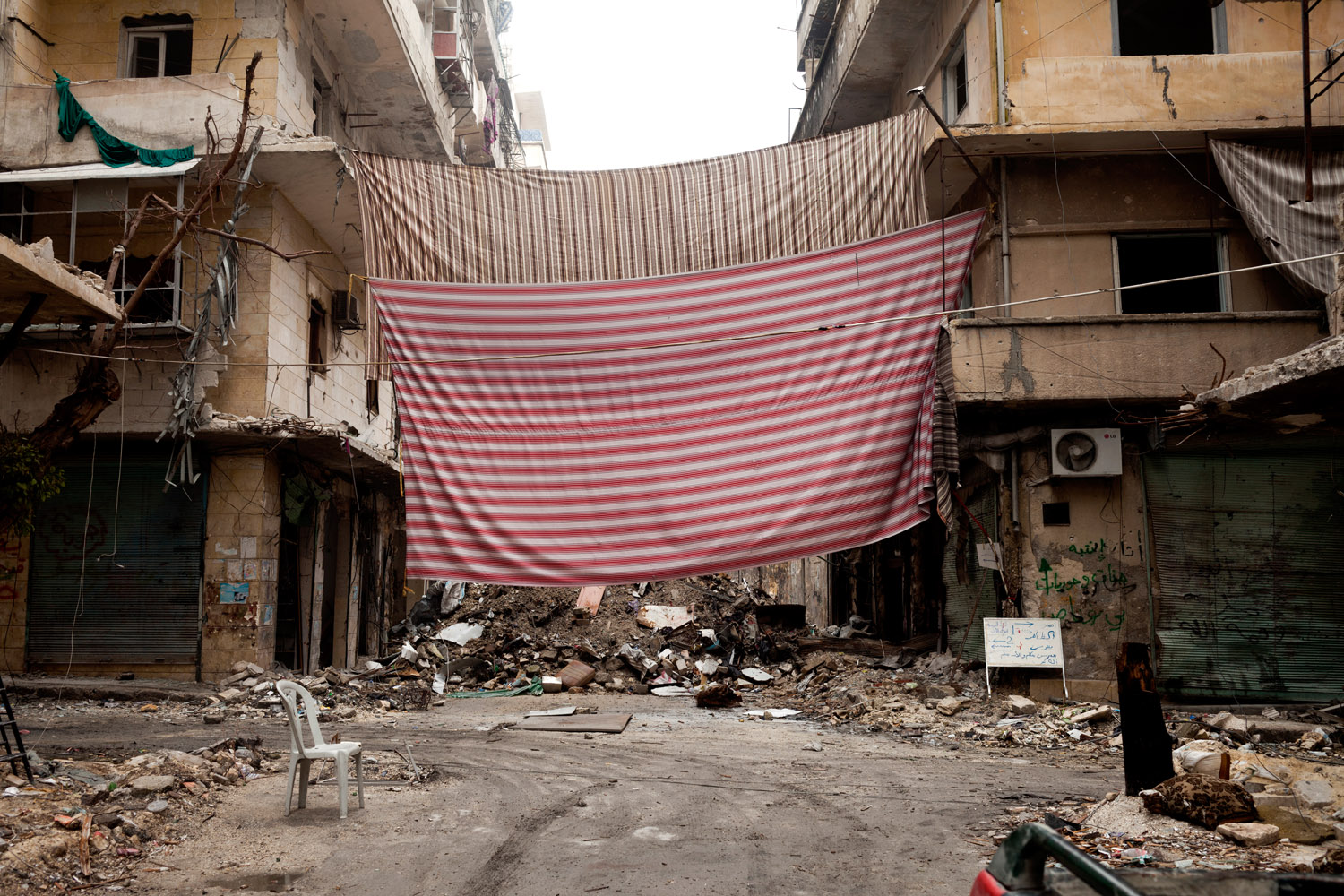
They are a familiar sight to anyone who has been on the frontlines in the embattled Syrian city of Aleppo: striped sheets—formerly store awnings, curtains and drapes—that once blocked the harsh sunlight or a neighbor’s prying eyes, now acting as shields against more lethal threats.
The sheets are strung between buildings (what’s left of them, at least) and across streets. They are meant to obscure a sharpshooter’s line of sight, providing a small measure of protection from an assassin lurking in the shadows of these often abandoned and devastated neighborhoods. For residents, even the simplest task, like going to a bakery or visiting a neighbor, can be a harrowing dash across a street with nothing but a piece of fabric for cover.
The billowing fabric provides unexpected bursts of color in urban landscapes that have otherwise been reduced to a near-ubiquitous gray: the gray of crushed cinder blocks from pulverized buildings, the gray dust that covers household belongings strewn about the rubble, the gray of a once-vibrant city that has been reduced to a stalemated battleground where it can sometimes seem as if the only other color on view is blood crimson.
The sheets also highlight the asymmetrical nature of Syria’s battlefield. The conflict, now in its third year, pits the army of President Bashar al-Assad against a hodgepodge of disorganized defectors, armed civilians and makeshift militias. One side has tanks, helicopter gunships and body armor; on the other side there are anti-aircraft guns and other weapons, often sourced from the black market, and handmade weapons fabricated in local workshops. The sheets are one more tangible testament to the rebels’ ability to improvise.
Photographer Franco Pagetti, who has covered conflicts in Syria, Afghanistan, Iraq and other hotspots, captures the beauty of these sheets, and the terror they represent, in this series of haunting images. There are no people in these photos. The curtains serve as a witness to and a barrier between the two sides of this unending civil war. Like so many aspects of the conflict, the curtains are quotidian realities that have been stripped of their mundane origins. Today, they fulfill a purpose very different from their original roles.
Pagetti says the curtains reminded him of the miles upon miles of concrete barriers that crisscrossed Baghdad during the worst of the sectarian violence there, in 2006 and 2007.
“Aleppo’s sheets serve the same purpose: they protect lives,” he says. “But you’re always aware how fragile they are.” As he moves through the neighborhoods, Pagetti says he has to be acutely conscious of the direction of the sun and wind. “If your shadow falls on the sheet, the sniper can see you… Boom, you’re dead. If there’s a gust that blows the sheet up for a moment, you are completely exposed… Boom.”
Franco Pagetti is an Italian conflict photographer represented by VII.
Rania Abouzeid is a Middle East correspondent for TIME. Follow her on Twitter @Raniaab.
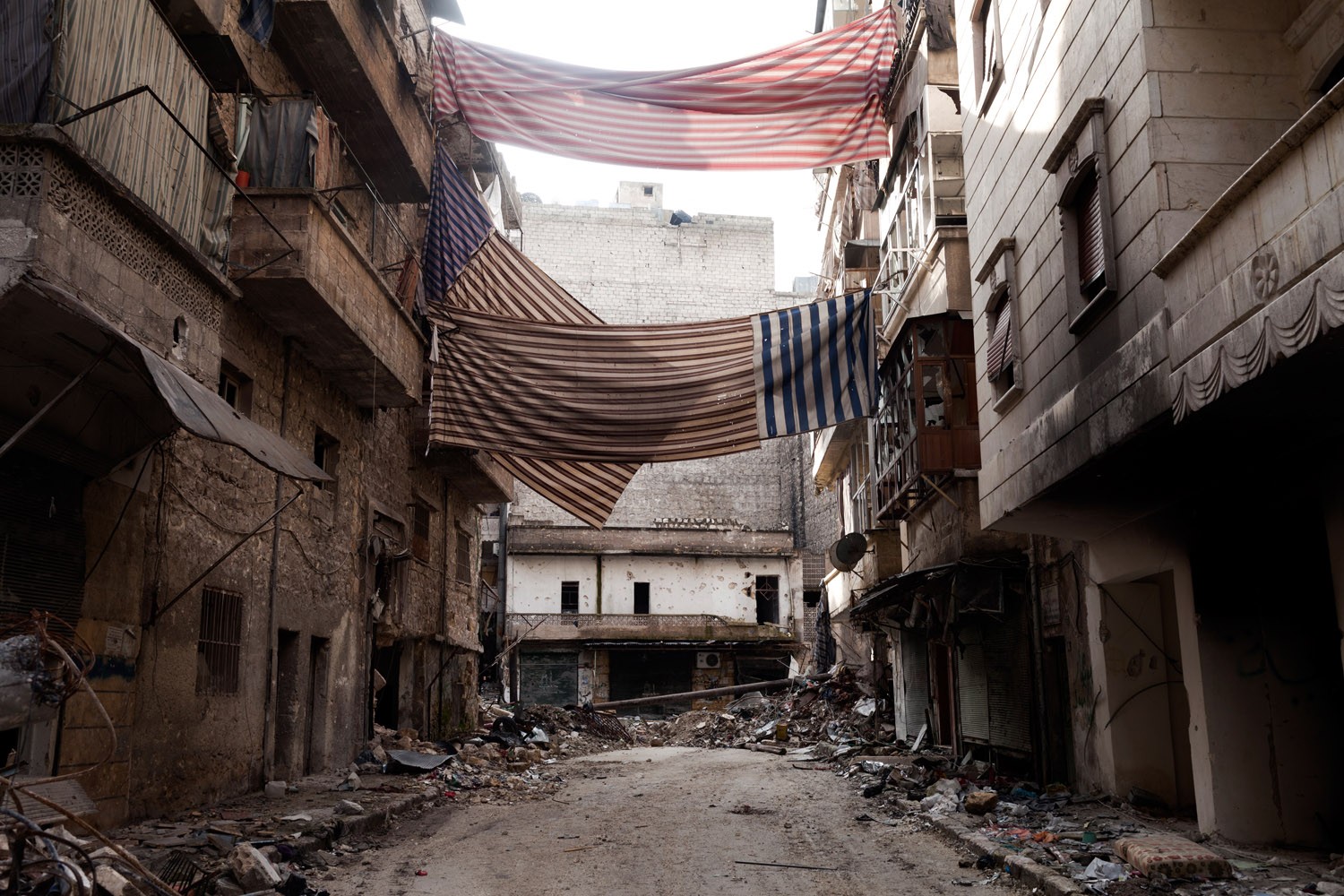
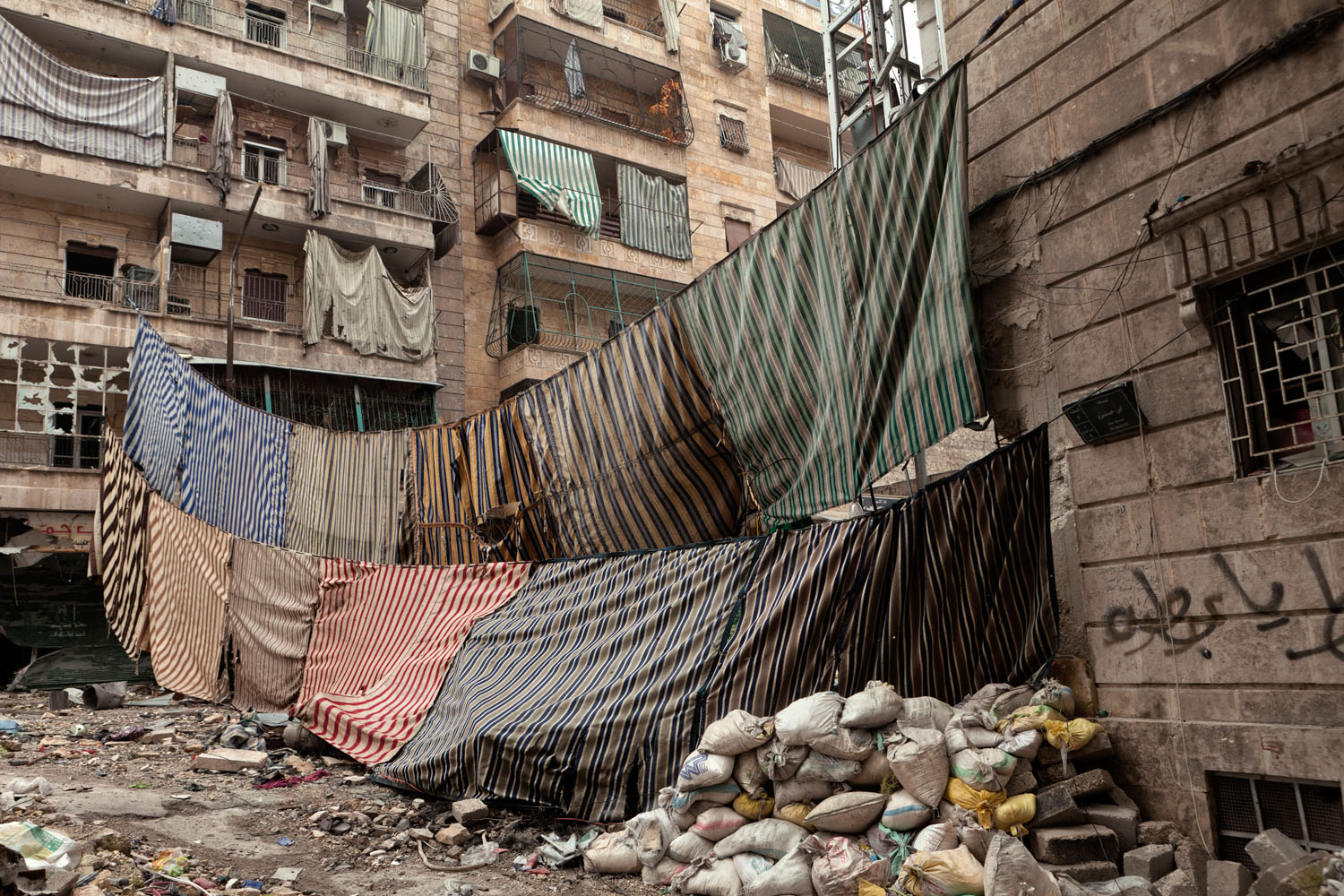
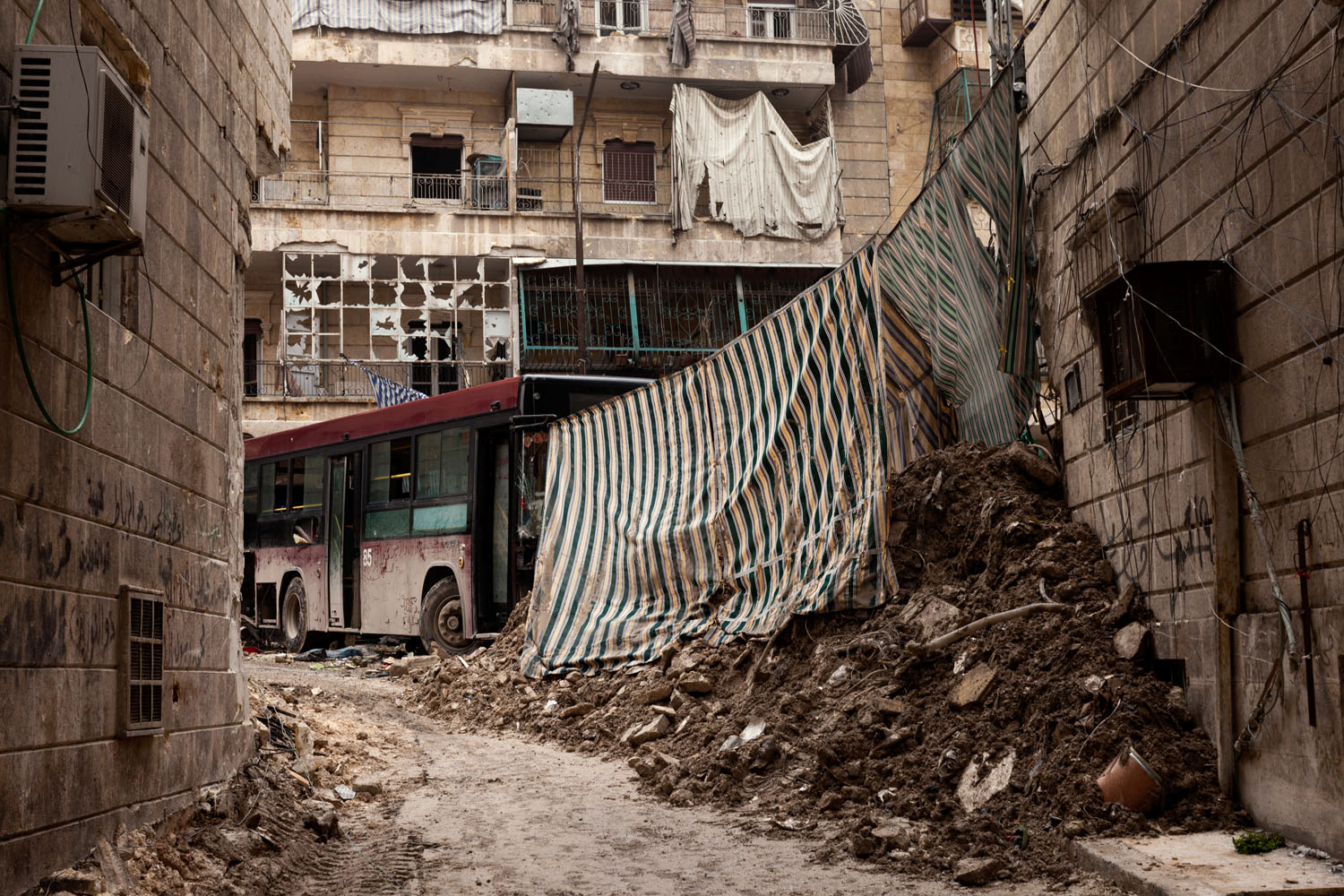

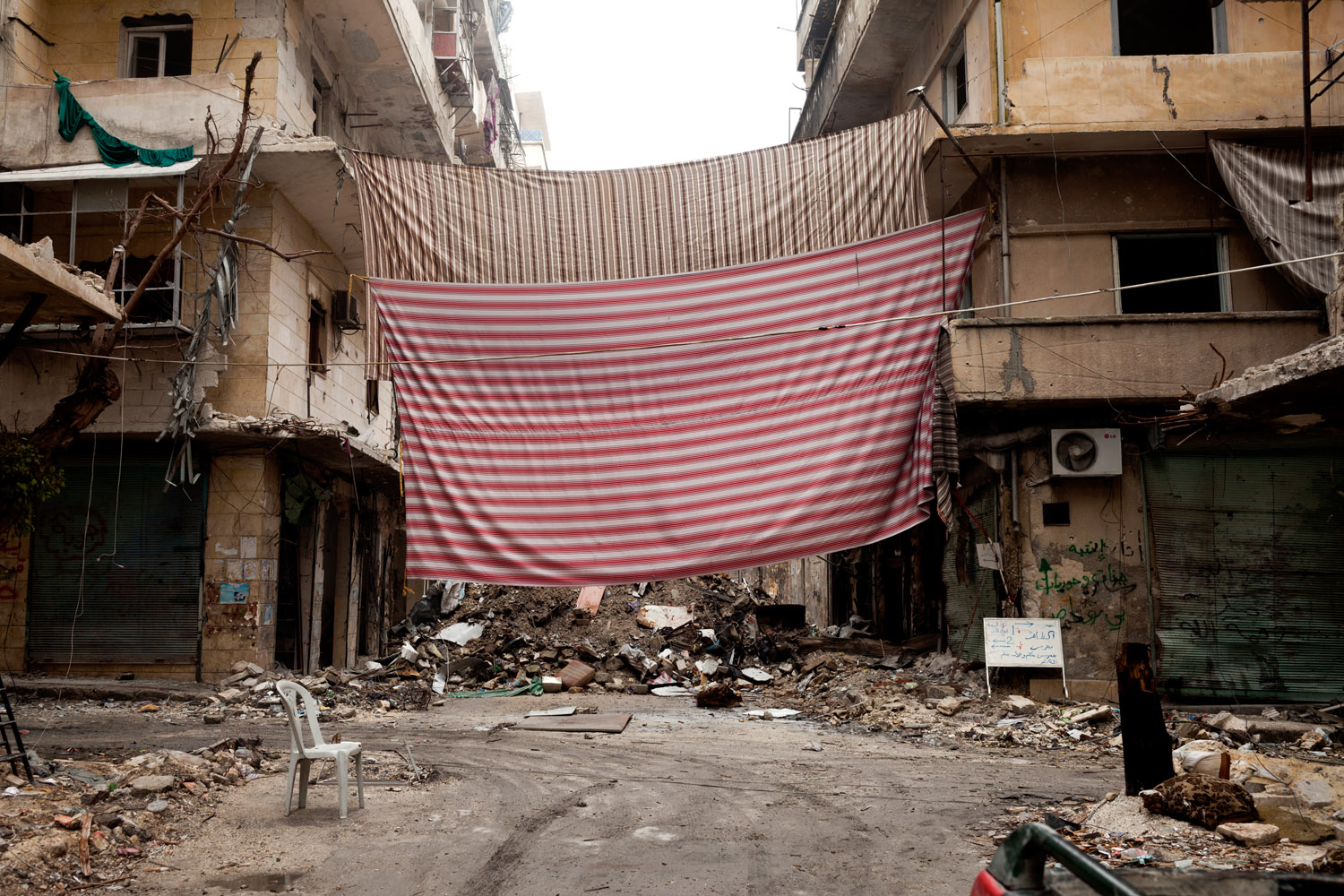
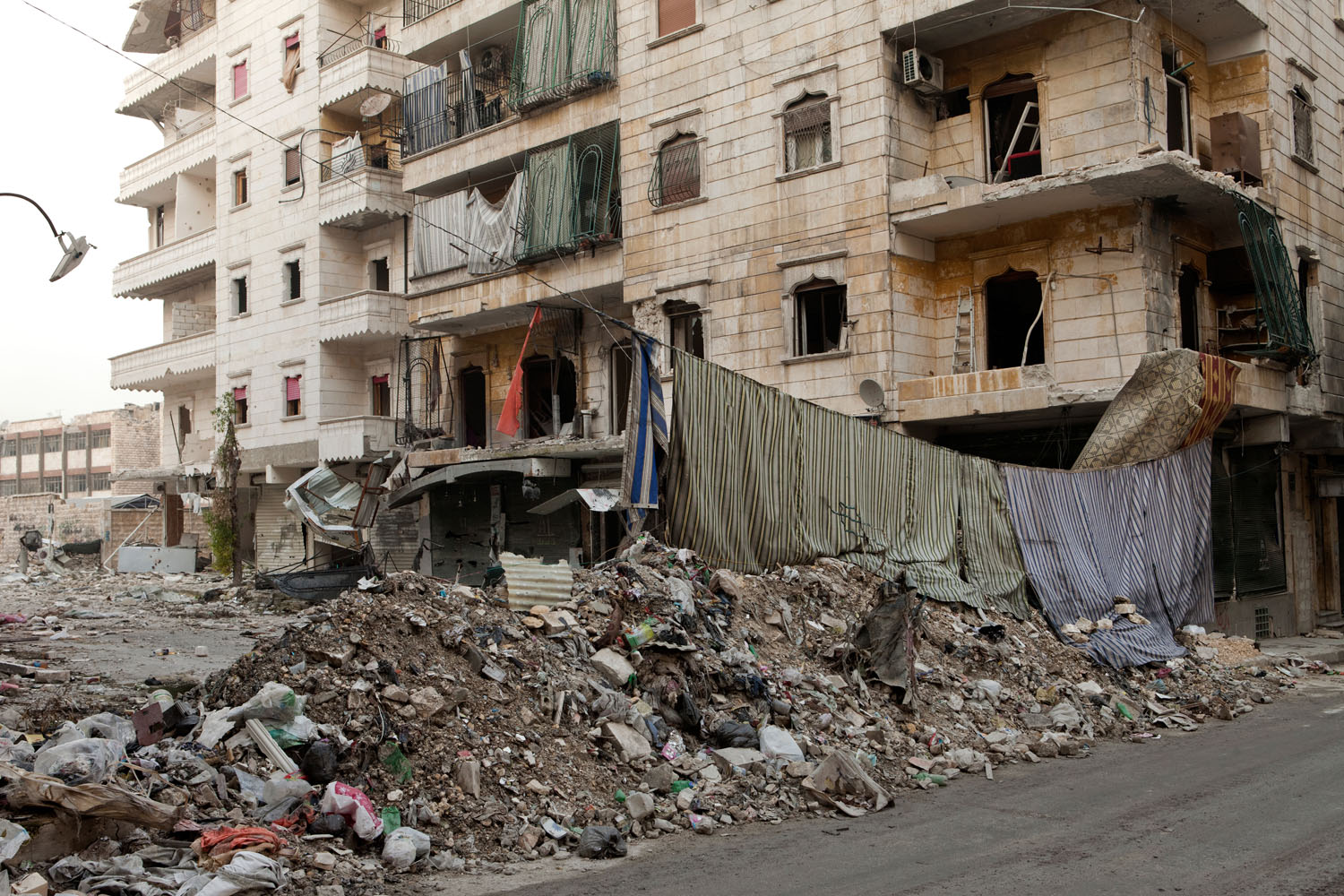


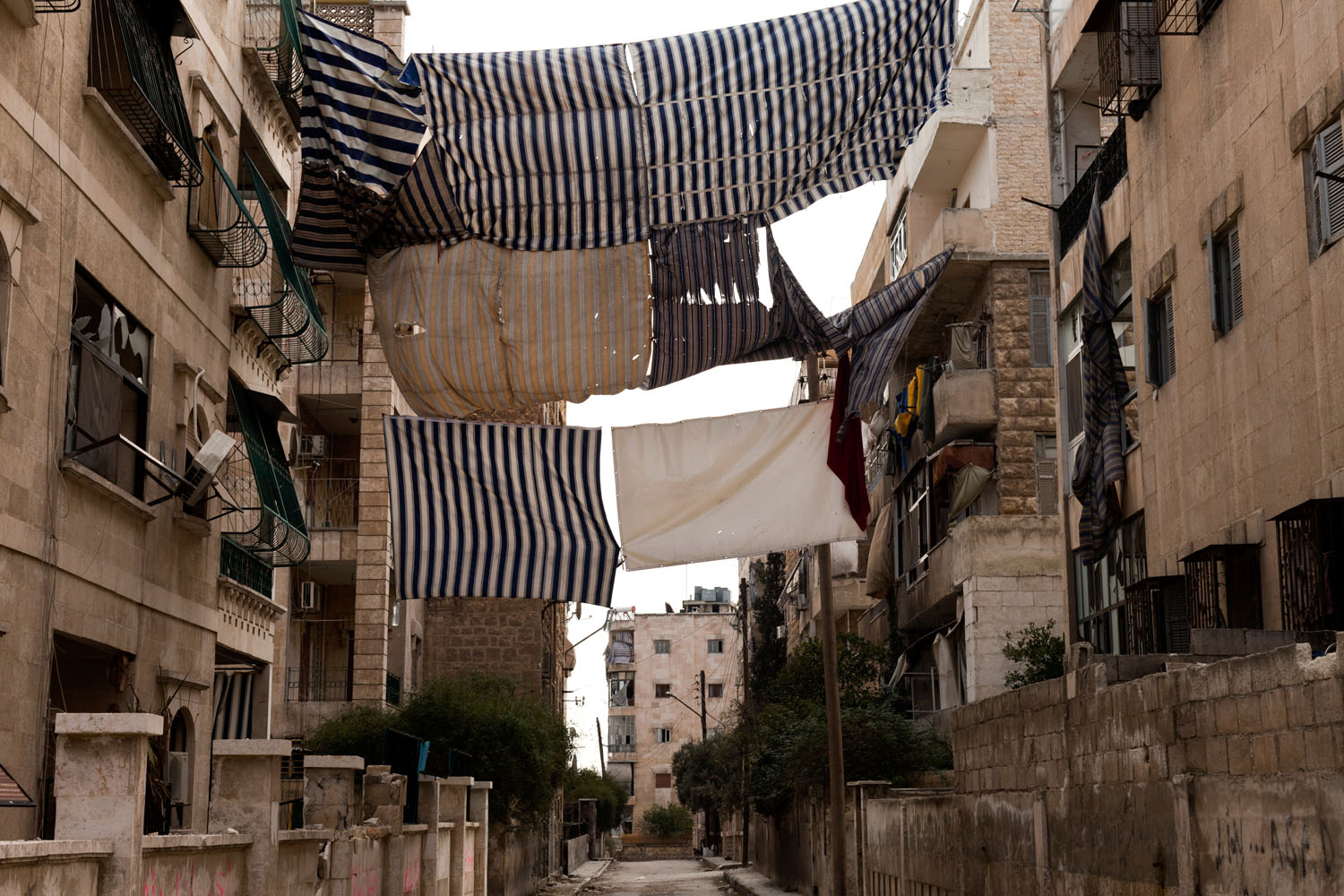

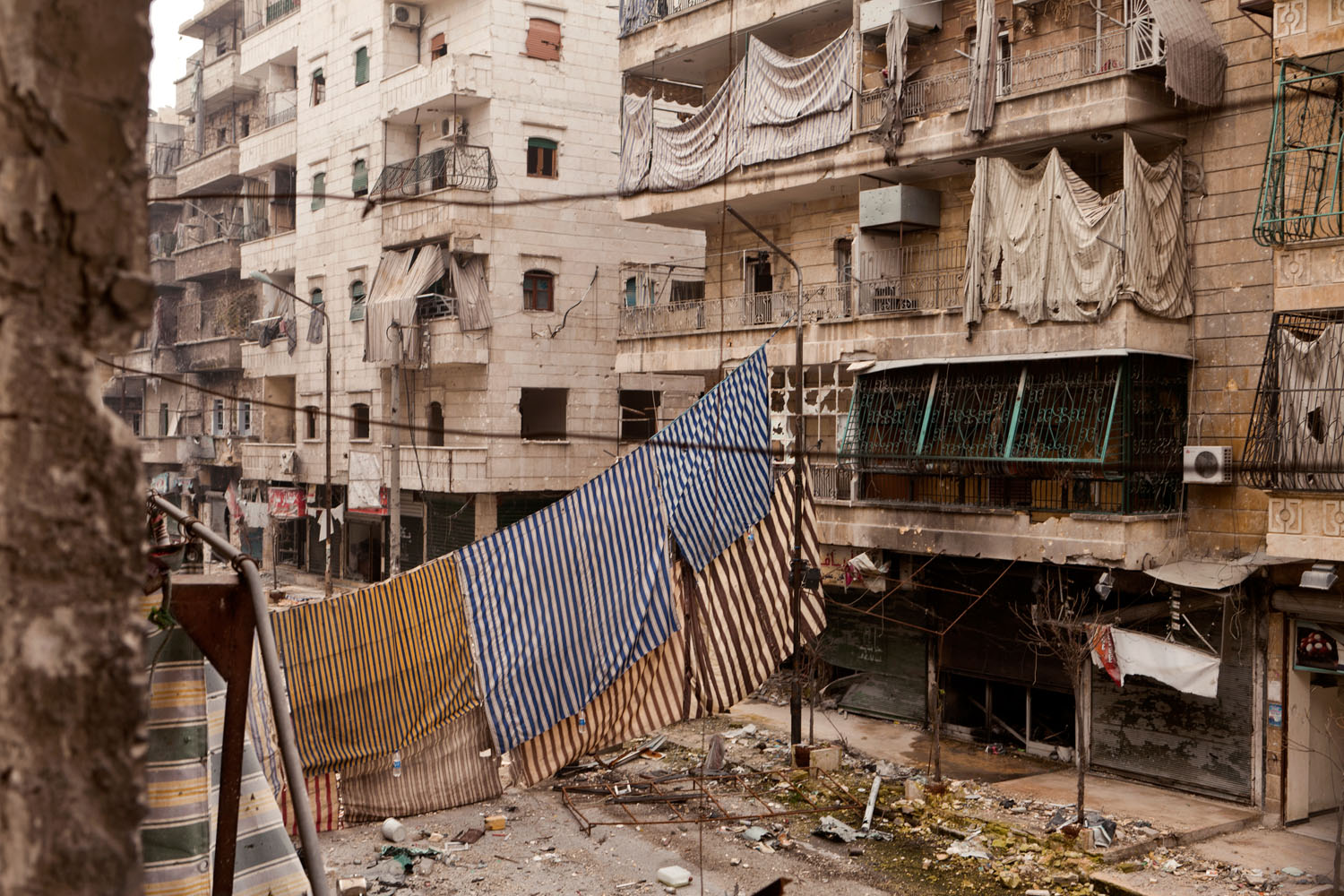
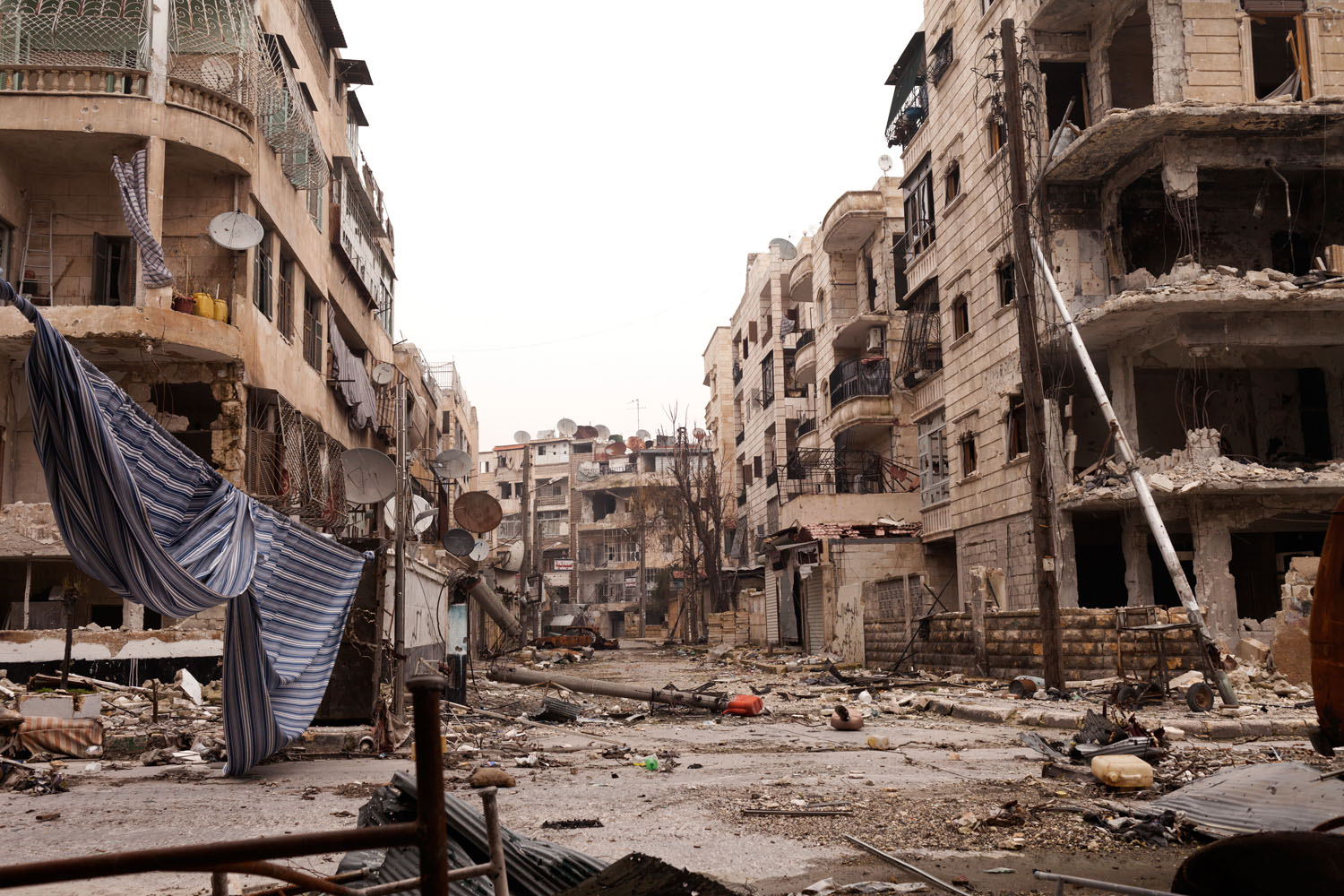

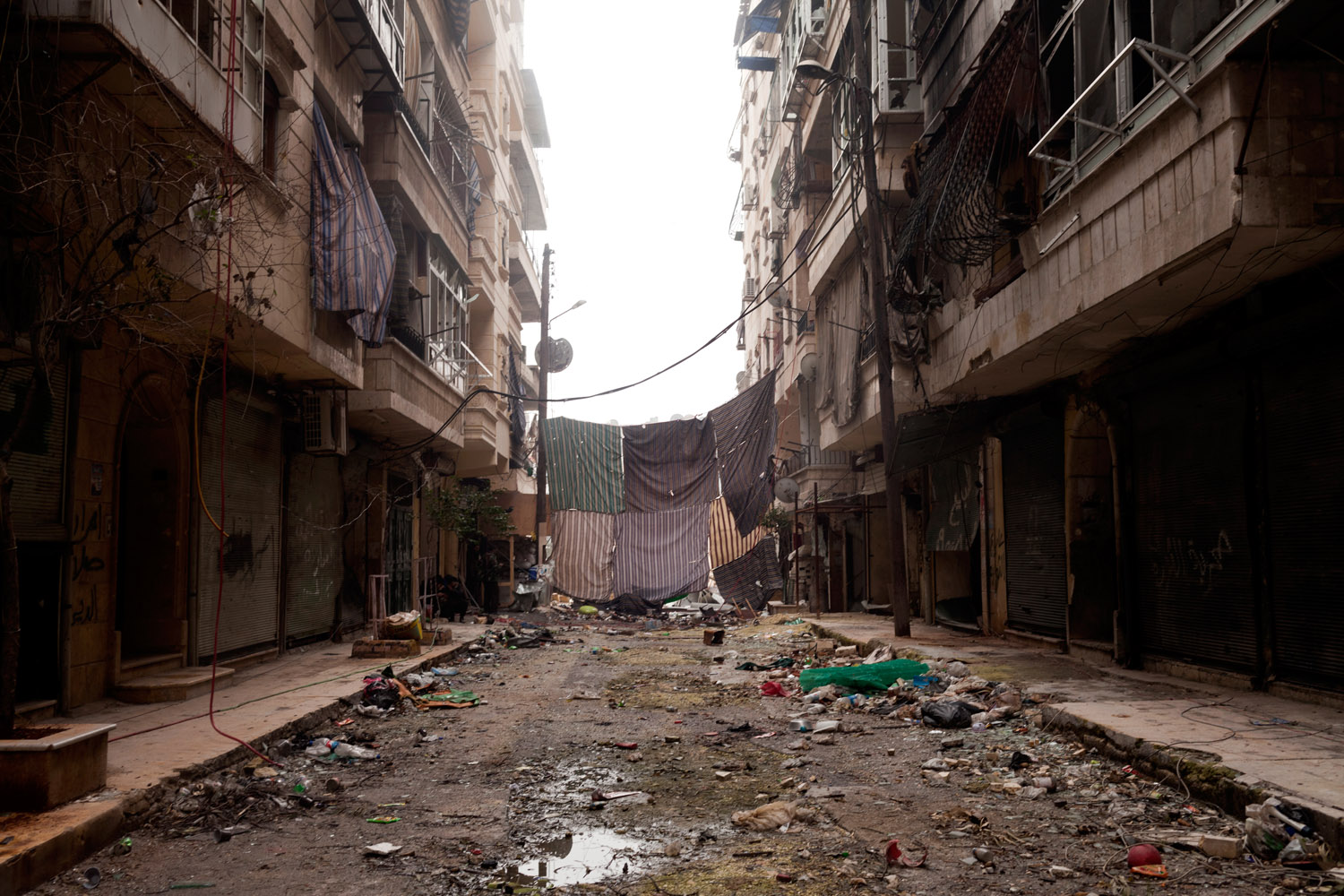
More Must-Reads From TIME
- The 100 Most Influential People of 2024
- The Revolution of Yulia Navalnaya
- 6 Compliments That Land Every Time
- What's the Deal With the Bitcoin Halving?
- If You're Dating Right Now , You're Brave: Column
- The AI That Could Heal a Divided Internet
- Fallout Is a Brilliant Model for the Future of Video Game Adaptations
- Want Weekly Recs on What to Watch, Read, and More? Sign Up for Worth Your Time
Contact us at letters@time.com